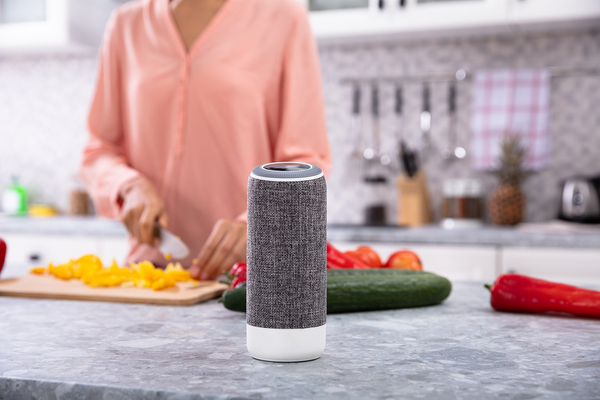The use of smart speakers is growing by leaps and bounds in the U.S. Approximately 26 percent of U.S. households own a smart speaker, such as Amazon’s Echo or Google’s Home. That’s 66.4 million people.

The increasing use of smart speakers in U.S. households…
Not only do an increasing number of households own smart speakers, but they also use them frequently. Forty-seven percent of smart speaker owners use them daily, while 69 percent use them weekly.
An Engagement Opportunity for Organizations
Smart speakers are very likely to go the route of technologies past: from interesting and useful gadget to important marketing and engagement tool. Companies and other organizations, such as hospitals, have increasingly developed voice-activated tools to increase their customer engagement. In fact, industry publications and technology news thought leadership are increasingly urging readers to leverage smart speakers.
A key selling point is the smart speaker’s lack of friction. Voice commands don’t require a user to be seated at a computer or to scroll or enter anything on a smartphone, tablet, or computer keypad. Said equals done, as far as smart speakers are concerned. A more frictionless experience is likely to be popular with consumers and gives them more reason to engage.

…is an opportunity for organizations to serve their customers and create brand engagement.
Will Simplicity Reign?
It’s easy to see the opportunities once you drill down to examples of how smart speakers can work for businesses and consumers. A recent Harvard Business Review piece, for example, hypothesizes that all sorts of businesses that require appointments can offer the ability to do so through voice commands. The client doesn’t have to get their phone out, execute the call, and make the reservation; theoretically, they just ask Alexa to set up an appointment for the date and time they want. Restaurants, hair salons, and doctor’s offices could all benefit from this system.
Another potential use is the ubiquitous surveys that so many businesses would like completed after a service is done. Retailers, utility providers (cable television, internet), restaurants…the list is endless; even the U.S. Post Office gives users a receipt asking for feedback. A voice-activated method is much easier for consumers to complete than going to a website and clicking through a survey – and therefore, much likelier to be completed.
Businesses can also extend their brand by providing resources to potential consumers. One interesting example is Procter & Gamble’s Tide. Business leadership at Procter & Gamble created an Alexa skill, Stain Remover, which provides information to users on how they can remove over 200 stains. (An Alexa skill is a capability that users can add to the device. Skills are roughly analogous to smartphone apps.) If an Alexa user asks how to get out a red wine stain, for example, he or she will be guided step-by-step through the method and ingredients needed. The process is much like a how-to feature on the Web, but the voice commands, of course, mean that the stain removal itself can be done while the user is actually listening to the instructions, which sounds much more convenient.
Helpful information is often a brand extender for all types of organizations. Boston Children’s Hospital, for example, created an Alexa skill called Kids MD, which provides information about children’s symptoms.
Smart speakers are likely to be increasingly in use going forward, as business leadership strives to increase their organizations’ reach.
